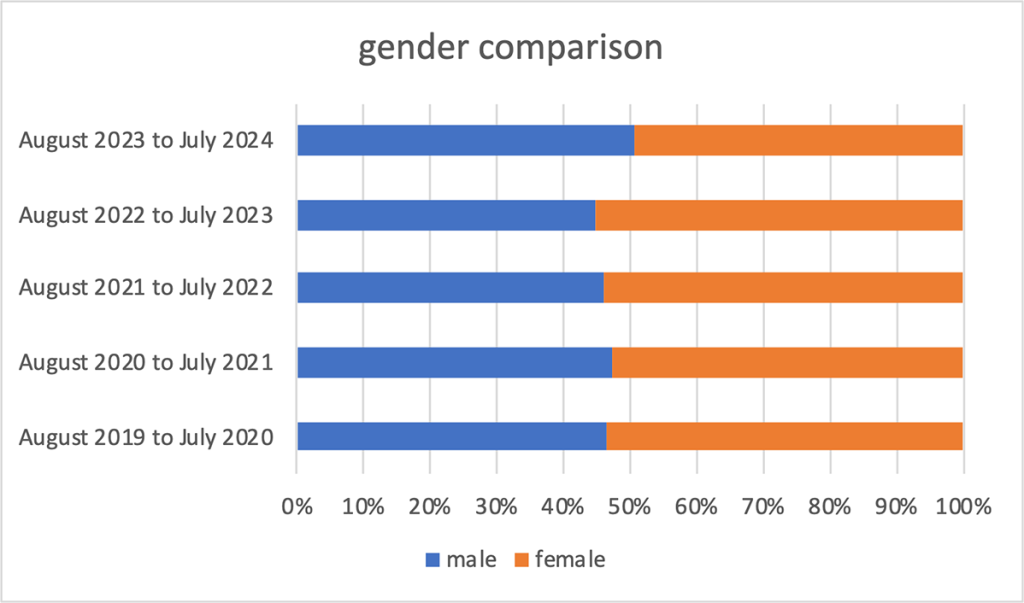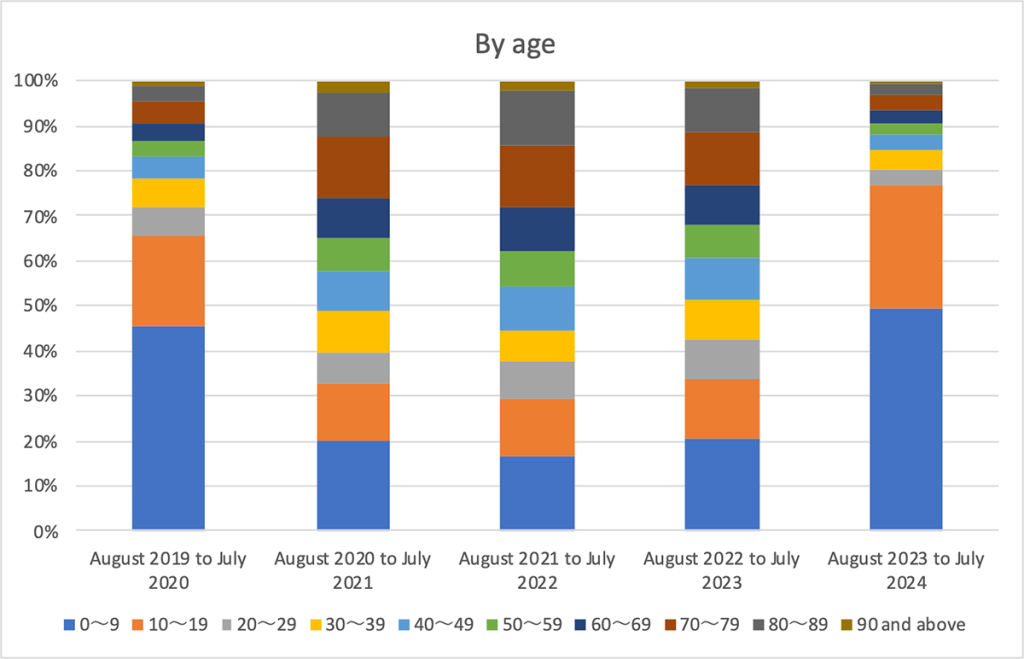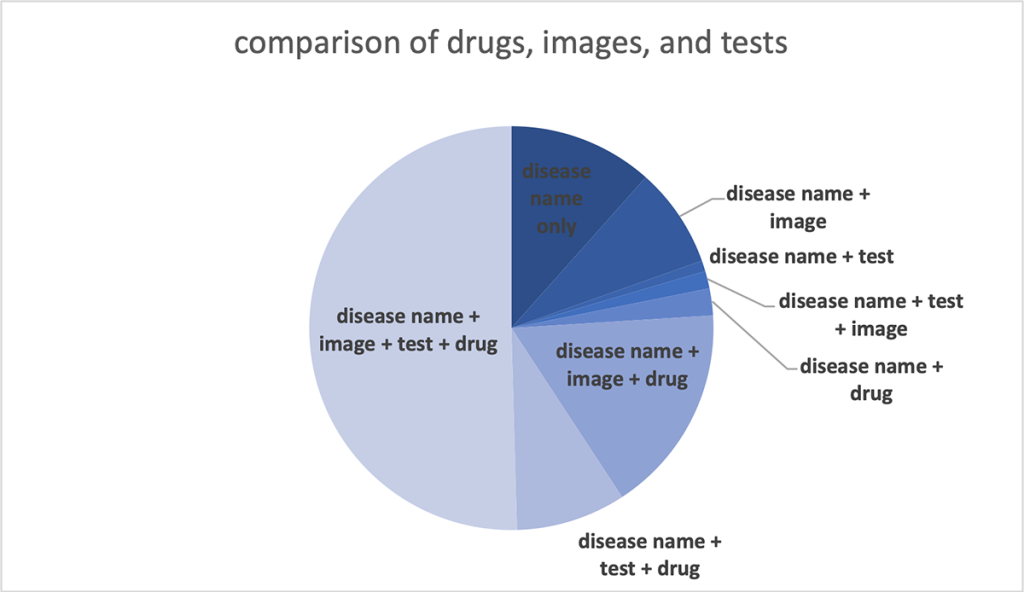
Trends in Mycoplasma Pneumonia and Treatment Trends: Analysis by Age and Gender (2019-2024)
Recently, there have been frequent reports of an increase in the number of people infected with Mycoplasma pneumonia.
Mycoplasma pneumonia is a respiratory infection caused by infection with the bacterium Mycoplasma pneumoniae , and is one of the more common causes of pneumonia in children and young people . Approximately 80% of the patients reported each year are 14 years old or younger , but there are also reports of adults . Mycoplasma pneumonia occurs throughout the year, but tends to increase in the fall and winter .
Therefore, we investigated the monthly trends of patients with mycoplasma infection, mycoplasma bronchitis, and mycoplasma pneumonia from August 2019 to July 2024 using MDV data , as well as comparisons by gender and age, and the respective proportions of patients who received medication, images, and tests .

Data period : August 2019 to July 2024
Only hospitals with complete data for the specified month
Number of facilities that meet basic requirements: 148
In 2018 and 2019, the number of mycoplasma pneumonia patients increased toward autumn (September to November), just as viral diseases increase toward the cold season, but since 2020, there have been no outstanding months and the number has remained stable. Also, since 2020, the incidence rate has decreased, possibly due to the influence of infection control measures for coronavirus infection, and in 2024, infections have spread again, perhaps due to the relaxation of infection control measures. The graph shows that the number of mycoplasma pneumonia infections in 2024 was higher than usual, and that it will continue to rise in the future.
comparisons were made by sex and age using MDV data .

Data period : August 2019 to July 2024
Only hospitals with complete data for the specified month
Number of facilities that meet basic requirements: 148
There was little difference between the sexes in the incidence of Mycoplasma pneumonia, with a slightly higher incidence in women. However, the proportion of men was higher between August 2023 and July 2024 than between August 2022 and July 2023.

Data period: August 2019 to July 2024
Only hospitals with complete data for the specified month
Number of facilities that meet basic requirements: 148
2019 to July 2020, children aged 0-19 accounted for more than half of the cases , but from fiscal 2020 to fiscal 2022, due to the impact of the coronavirus pandemic, the age distribution has expanded to include not only younger people but also older people such as those aged 70-79 . From August 2023 to July 2024 , the age distribution is returning to that of August 2019 to July 2020 .
Finally , among patients with Mycoplasma pneumonia, Mycoplasma bronchitis, and Mycoplasma infection, we compared patients who underwent only imaging tests, patients who underwent only mycoplasma tests, patients who underwent only imaging tests and mycoplasma tests, patients who were prescribed only macrolide antibiotics, patients who were prescribed a macrolide antibiotic and underwent only imaging tests, patients who were prescribed a macrolide antibiotic and underwent only mycoplasma tests, patients who underwent all of the following: imaging tests, mycoplasma tests, and a prescription for a macrolide antibiotic, and patients who underwent none of the following.

Data period: August 2019 to July 2024
Number of facilities that meet basic requirements: 137
[Disease name] 8842166: Mycoplasma infection , 8842167: Mycoplasma bronchitis , 8842169: Mycoplasma pneumonia
[Imaging examination] E000: Fluoroscopy , E001: Photographic examination , E002: Photography , E200: Computed tomography (CT) (per series) , E203: Computed tomography diagnosis
[Tests] 160041010: Mycoplasma antibody qualitative , 160153150: Mycoplasma antigen qualitative (FA method) , 160189650: Mycoplasma nucleic acid detection , 160193910: Mycoplasma antibody semi-quantitative , 160202050: Mycoplasma antigen qualitative (immunochromatography method)
[Drugs] J01F0: Macrolides and similar drugs (both in all dosage forms)
The proportion of “disease name + image + examination + medication” was high, followed by “disease name + image + medication,” indicating that imaging diagnosis and medication are the main methods used. The graph also shows that the proportion of “disease name only” is high, likely because diagnoses are often based on symptoms and clinical judgment.
【reference】
Mycoplasma pneumonia | Ministry of Health, Labor and Welfare (mhlw.go.jp)
Note: This article was published on November 1, 2024.
Data survey and analysis tailored to your specific requests
Databases, data analysis requests, and more.
© Medical Data Vision Co., Ltd. All Rights Reserved.





